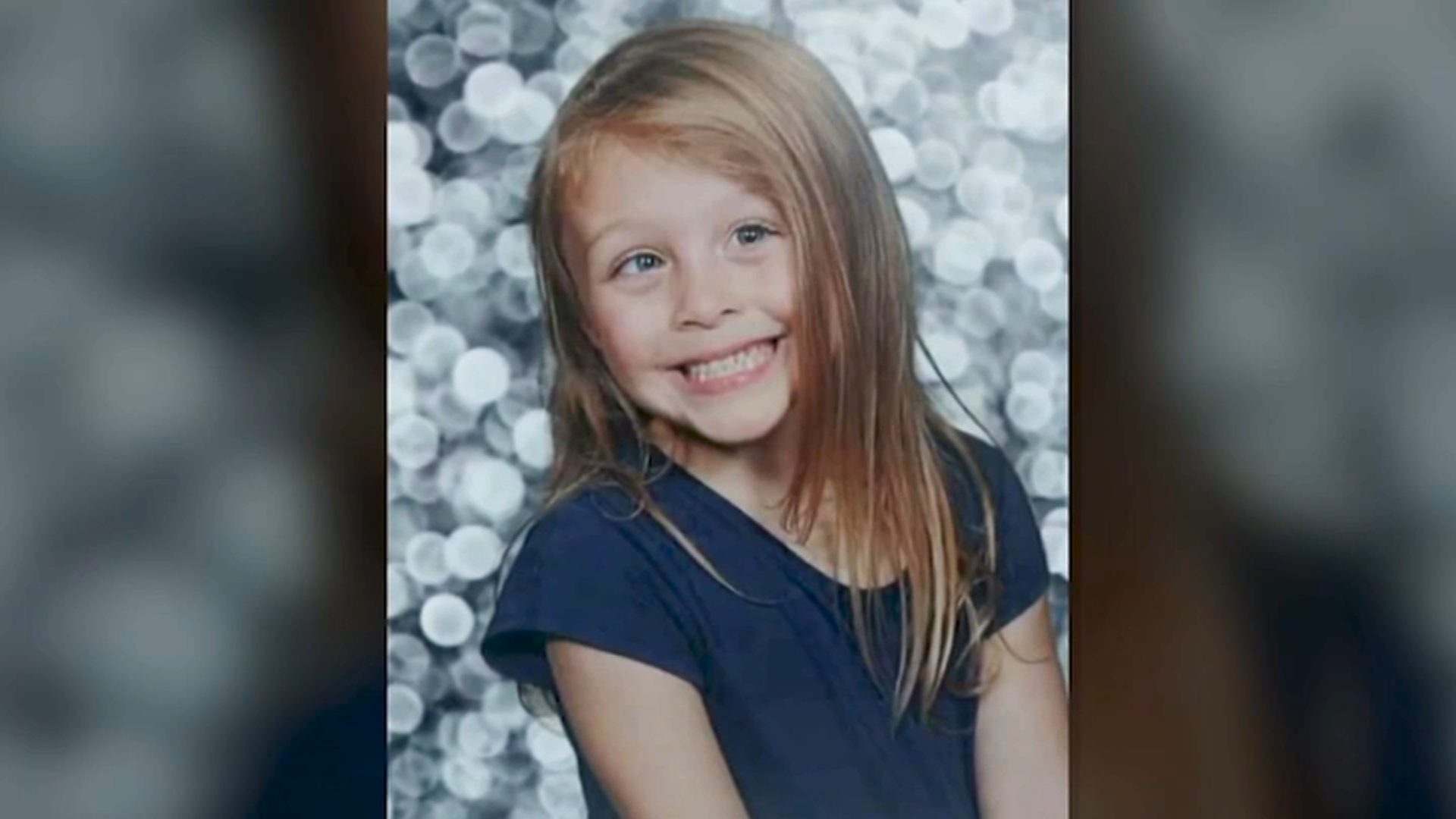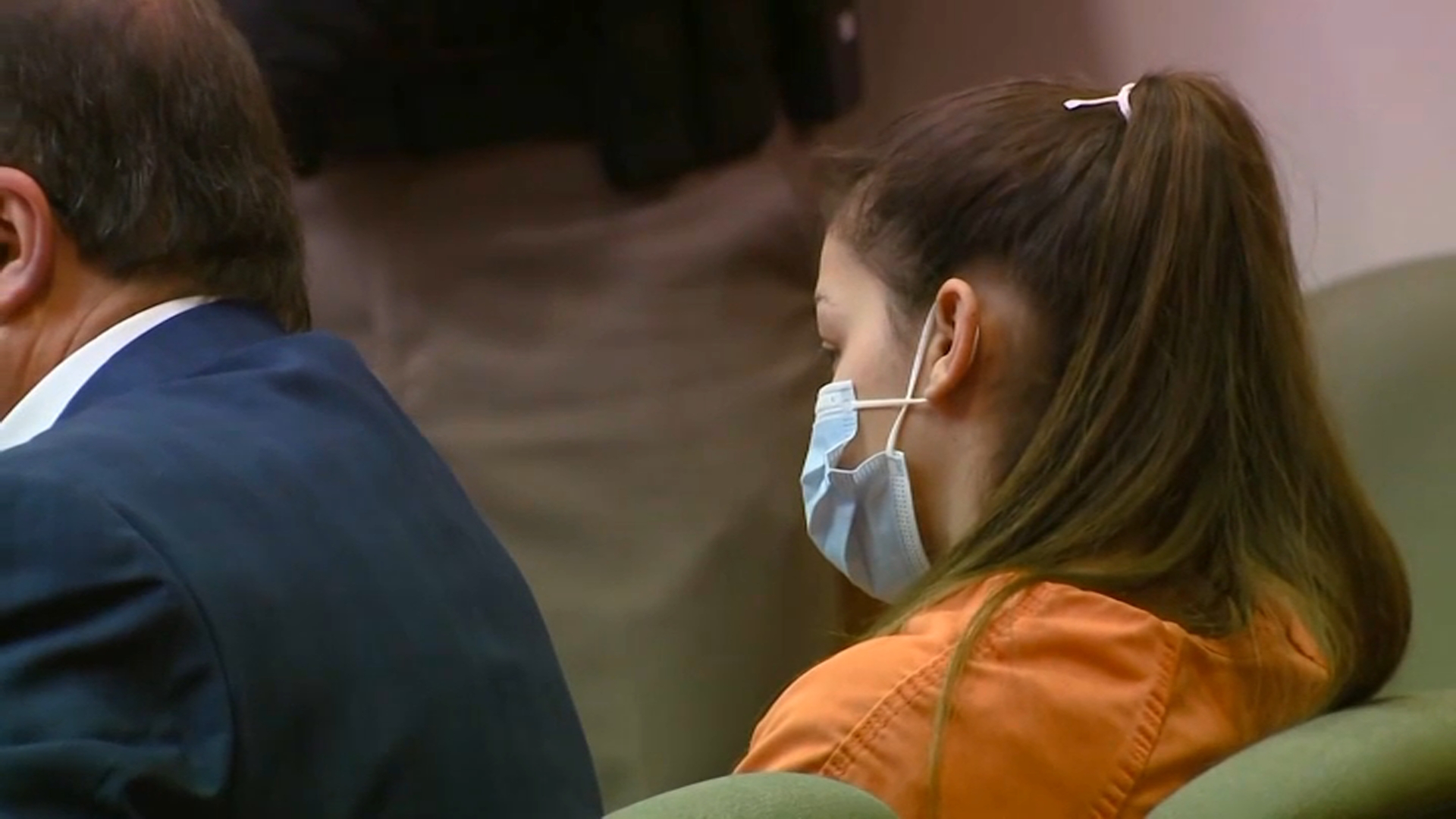
A new report on the Harmony Montgomery case by the Office of the Child Advocate in Massachusetts is shining light on the young girl's childhood.
Harmony was last seen in late 2019, when she was 5, but she wasn't reported missing until about two years later. The report offers new details about Harmony's tumultuous childhood, including that she was placed in the custody of the Massachusetts Department of Children and Families in 2014, when she was two months old. She remained in the custody of the DCF until February 2019, when a judge granted custody to her father, Adam Montgomery, despite his extensive criminal history.
On Wednesday the OCA released a report on the findings of a multi-system investigation into the case. The report unveiled new details about Harmony's childhood. Here are some important revelations:
Harmony defied expectations from birth
Get New England news, weather forecasts and entertainment stories to your inbox. Sign up for NECN newsletters.
When Harmony was born, medical experts believed she would not be able to see or that she would be severely disabled. However, Harmony defied her doctor's expectations. Even though she was blind in her right eye, she developed coping mechanisms that helped her overcome challenges.
From the start she was an independent child who liked to play with dolls, read books, play with her friends, and she loved to eat. The report describes her as a "charming" and "very active" young girl.
It doesn't seem as she was a picky eater as the report describes her eating all types of foods such as fruits, onions, and vegetables. In one instance, she was playing in a vegetable garden and picked up cherry tomatoes and cucumbers.
She also had a charm for language and was known to be very empathetic, according to the report.
She spent most of her life inside the DCF system
Before her disappearance at the age of five, Harmony spent her young life in the care of the Massachusetts Department of Children and Family. She was born in 2014 to her unmarried parents who were separated by the time she was born.
In the first two months of her newborn life, she was in the care of her mother, Crystal Sorey. Soon after, she was removed from the care of her mother and placed in foster care by the Massachusetts Department of Children and Families (DCF). From 2014 to 2019, Harmony grew up inside the DCF system until a judge granted her father custody of her in February 2019.
The report says that the result of Harmony spending her first few years in the DCF system was "significant placement instability" because she went back-and-forth between her foster parents' home and the home of her mother multiple times. The report says this instability of home caused "significant trauma" and delayed a permanent home for Harmony.
When she was given to her father, the report says DCF focused mostly on Harmony's mother in its case management, failing to complete an assessment on Adam Montgomery, who was incarcerated when the department's involvement with Harmony began.
Adam Montgomery lived with Harmony in Manchester, New Hampshire when he was given custody of the young girl. Montgomery is the last known caregiver and Manchester is their last known residence. He has since been arrested in relation to her disappearance, according to the new report.
A broken family: Incarcerated father, a mother battling substance abuse
Harmony's five-year childhood was not easy. Before being removed from her mother at just two months old, DCF received three reports early on alleging neglect of newborn Harmony. Her mother was allegedly abusing substances prompting concern for Harmony's wellbeing and safety. DCF opened investigations into the allegations but Harmony remained in the custody of her mom.
In August 2014, DCF received two more reports alleging neglect of Harmony. Even as the mother tried to seek treatment for her substance abuse, she continued struggling with substance which raised safety concerns for the two-month-old newborn.
This led to Harmony being removed from her mother's care and placed in foster home for the first time. As the system took custody of Harmony, DCF sent her mother an action plan which included treatment, random drug testing, and scheduled supervised visits with Harmony.
Four months later, Harmony returned to Sorey but remained in legal custody of DCF. That return to her mother was unsuccessful as four months after that, when Harmony was just 10 months old, she was removed from her mother's home and placed in foster home for the second time.
Meantime, Harmony's father was behind bars. In September 2014, Montgomery was mailed an action plan by DCF that included a parenting program and anger management, and getting to know his daughter's medical needs. Officials did not immediately hear back from Adam Montgomery. Later that year, he responded and expressed support for Harmony to be returned to her mother and requested a visit with Harmony. That request was granted, according to the report.
More News On Harmony Montgomery
Adam Montgomery had little contact with his daughter
Even though the incarcerated father signaled support to create a connection with his daughter in December 2014, the report concludes that Montgomery was in and out of his daughter's life since she was born.
The report details long gaps of time with no contact between Montgomery and his daughter Harmony. He would see her every four to six months, and spent a total of 40 hours over the course of 20 supervised visits from Harmony's birth to age 4 and a half.
In those supervised visits before a judge granted him custody of the young girl, the report says that Montgomery displayed "inappropriate expectations of her given her age." Officials did not have evidence that Montgomery had made the effort to attend Harmony's doctor appointments or to attend special educational meetings to learn how to best care for her.
The report concludes that there was a lack of focus on Harmony which "resulted in a miscalculation of the risks to Harmony" when she was in the custody of her father.
DCF failed to assess the situation after Adam Montogomery was granted custody
The report detailed failed systemic intervention by DCF. It concludes that DCF focused primarily on the mother and not the father as he was in prison when they intervened in Harmony's case.
Even though the father was nonresponsive at first, the report concludes that when he was responsive to visits, the agency did not do an assessment on Adam Montgomery's progress in the action plan he was provided early on. At the time he was granted custody of his daughter, DCF had no understanding of the father's family or personal history nor had evidence of his own efforts to better care for his daughter.
"The system failed Harmony," said Maria Mossaides, director of the Office of the Child Advocate, at a press conference Wednesday. "No one focused on Harmony and what she needed. It wasn't one decision, it was a series of decisions that did not place her at the center and therefore made poor decisions about the risk she was going to be facing."



